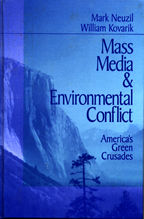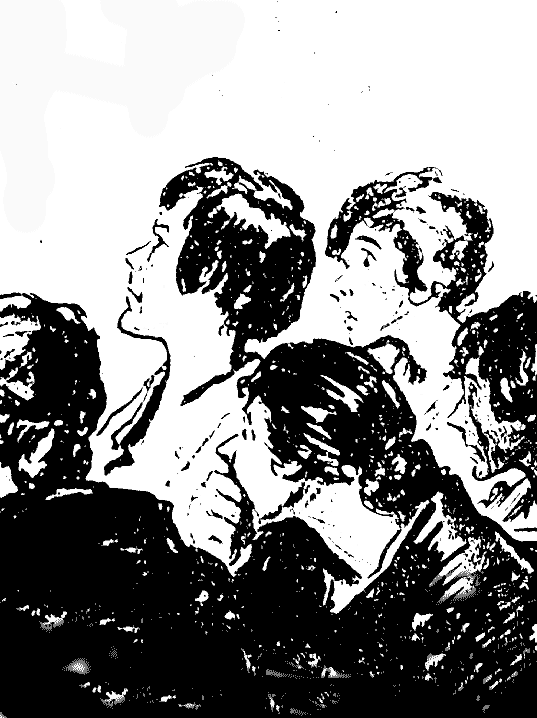(Published in Earth Island Journal, Sept. 11, 2012)

Radford University journalism students are challenged by Larry Gibson during a 2008 mountaintop mining tour.
Larry Gibson’s parents never worried about finding him, when, as a boy, he wandered out into the forest. All they had to do was spot the hawk that followed him from the air. That’s how close Gibson was to the West Virginia mountains.
He pined for those mountains after his family joined the exodus from Appalachia, moving to where the jobs were, into Ohio and Pennsylvania, in the 1950s. But finally, in the 1990s, he was able to move back to a small cabin on the land owned by his family for generations.
By that time, the nearby town of Kayford was nearly gone. And the hills where he once roamed trembled under gigantic bulldozers and leviathan drag lines that were pushing back the woods, reaching down into the earth, and tearing out the coal.
Mountaintop removal mining tore something out of him, too, but he found a way to fight back. And in the process, Larry Gibson became something unexpected, a unique species of Appalachian Lorax, a small man in bib overalls who could elevate your vision with a few dozen words.
Gibson died Sunday following a heart attack at his home on Kayford Mountain in West Virginia’s Raleigh County. He was 66-years-old.
In thousands of speeches at home and across the Appalachian region, he would ask people: What do you hold so precious in your own circle of life that you don’t have a price on it? What would it be?”
For Gibson, the answer was always Appalachia, the mountains, and his family’s vanishing way of life.
Gibson’s answer wasn’t everyone’s — but his question was. And when he asked it you could see people reaching deeply inside themselves as he talked with them, and challenged them, and charmed them into siding with him to fight the injustice that had already swept away most of his world.
Because he felt the injustice so deeply, Gibson stubbornly held onto a remnant of his world — a 53-acre island whose high point was a family cemetery — even while the surrounded 12,000 acres were blasted into a moonscape.
And because he did not sell out, journalists from just about every major network and publication in the world were able to see mountaintop removal first hand, while students could see the hell that earth would become if the power of giant corporations continued unchecked.
Standing in the family cemetery, visitors could see what Gibson meant when he said this form of mining was “like raising the dead while burying the living.
Kayford Mountain became the world’s image of mountaintop removal mining, said Mary Anne Hitt of the Sierra Club: “Because it was one of the few places you could reliably see mountaintop removal from the ground, everybody went to Kayford. And Larry was always there to greet them and give them a tour.” He would bring people up to the cemetery, then walk them over to the edge of a gaping wound in the earth. It was a view, Hitt wrote in a eulogy on Daily Kos, “that would shake you to your core and never let you go.”
Gibson’s path was not an easy one. Two of his dogs were killed. Coal-crazies constantly harassed him; and his cabin would regularly take bullets. Fellow activists were afraid that he would take one too, with all the threats he got. They raised $10,000 for a security system in 2010, but even years before that, they were pleading with coal-friendly West Virginia officials to tone down the “war on coal” rhetoric.
“Larry was one of the ones that stood elbow to elbow with me when no one else was there,” Goldman prize winner Maria Gunnoe said. “He came to my home to check on me after a flood put out the phone lines. Everyone loved him — everyone but the coal companies. Some of their men were simply cruel to Larry Gibson, and they should hang their heads in shame for the way they treated him.”
Despite the abuse, he had a stolid and unshakeable demeanor whether speaking to large crowds, small groups, or the cameras of TV crews from around the world.
Gibson served on the board of the Ohio Valley Environmental Coalition and helped form other groups like Coal River Mountain Watch. He understood the day-to-day practicalities of organizing and coalition building and gentle persuasion. But he could be fierce as well.
“Few people in our country were so fearless in the face of political pressure, bankers, Big Coal backlash and even death threats,” author Jeff Biggers wrote yesterday in a remembrance on The Huffington Post. And fewer people had the inspiring impact of this determined mountaineer.
Although he was an international figure, traveling to Latin America and arguing for native Appalachian rights at the United Nations, Gibson remained unfazed by fame and well grounded in the mountain life and lore that was his heritage.
Partly because of this combination of fearlessness and inspiration, Gibson was named a CNN Hero in 2007. More honors would doubtless have come if he had lived longer.
“I always imagined that, when we celebrated the end of mountaintop removal, Larry Gibson would be there,” Hitt wrote.
Gibson is survived by a wife and three children. The family has asked that those who wish to express their condolences donate to his Keeper of the Mountains Foundation at mountainkeeper.blogspot.com.
“I think it’s just so ironic,” Gunnoe said, “that Larry left Kayford Mountain through a gate that the coal company used to try to keep him out, the gate to a cemetery where his Grandma and Grandpa were buried.
“You win, Larry,” Gunnoe said wistfully. “You got the last laugh.”

 Revolutions in Communication
Revolutions in Communication Mass Media & Environmental Conflict
Mass Media & Environmental Conflict